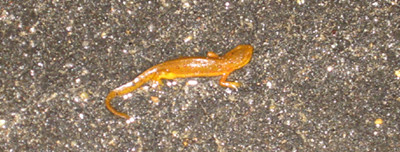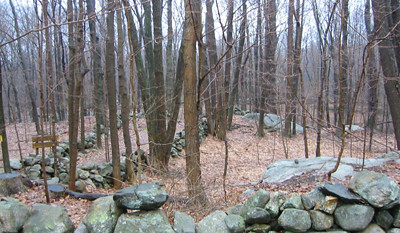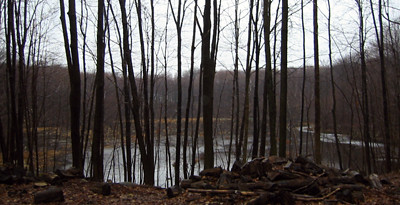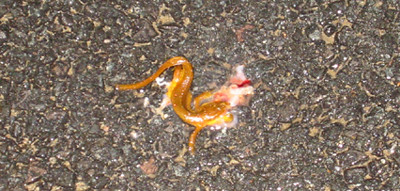Eco: Caution amphibians crossing
Spring peepers could be heard for the first time this spring last week. Among the earliest of the frogs to become active each year, their distinctive calls are an early sign that local amphibians are on the move again, migrating from winter burrows to swamps, ponds and vernal pools to lay eggs.
Salamanders are in motion as well, perhaps a few weeks later than other years following the long winter and late snow. As overnight temperatures move closer to 40 degrees, and drenching spring rains saturate the freshly thawed ground, animals like the red spotted newt pictured below begin to move.

(A red spotted newt lays in a Connecticut road after having been struck by a passing car during the night.)
It can be a perilous time for salamanders, as they can cover hundreds of feet moving from woodlands to wetlands, and can often be seen crossing wet roads on rainy nights as they make their way from one place to the other. These days, increased traffic, especially at night when the animals are active, and modern road design, add to the hazards the animals face.

(On one side of the road a woodland where many salamanders had dug in for the winter.)
Dr. Michael Klemens, a well known Connecticut biologist who has studied the state's amphibians and reptiles for decades, suggests that the high curbs commonly used on local roads pose barriers that can trap amphibians in roadways. The result, he suggests, has been that not only have amphibians suffered increased mortality from cars, but more raccoons are found dead in the road each spring as well.

(On the other side of the same road, an upland wetland like many where local amphibians migrate to lay eggs.)
The raccoons, Klemens suggests, have grown accustomed to gorging themselves on the amphibian appetizers they find in abundance on local roadways each spring. Many salamanders are run over, others find it much more difficult to climb over curbs and out of roadways than it was for them to tumble in. As the raccoons fill their bellies with fresh salamander, they apparently forget about passing cars, only to meet the same fate as their table fare.

One solution would be for local municipalities to simply specify a different model curb, the so-called Cape Cod curb. Another would be for drivers to be on the lookout for critters while driving wet roads on rainy nights in the spring.
0 Comments:
Post a Comment
<< Home